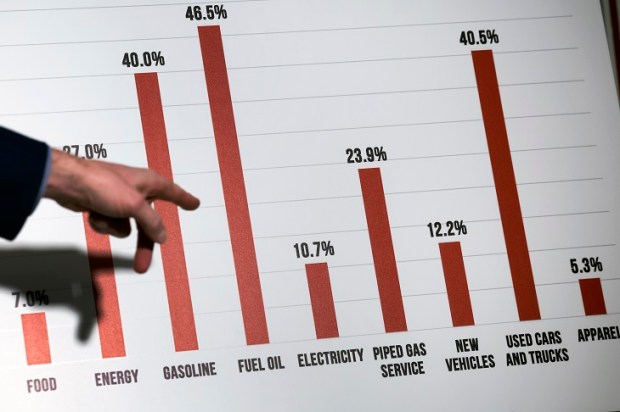Most will have heard of ‘Performance Enhancing Drugs’ and how any trace of such found in an athlete will cause that athlete to be disqualified from competing and/or have their race results cancelled.
Basically, these drugs are used for: (a) skeletal growth (specifically oestrogen/imitators) up to the mid-twenty years of age; (b) to boost muscles in strength and mass (testosterone/imitators) and; (c) increase red blood cells for energy conversion capacity.
Extra testosterone comes with issues such as aggressive behaviour, so the behaviour modifier action of oestrogen (or imitators) comes into play. Years ago, on one of my regular trips to America, I bought a T-shirt the front of which read: ‘I’m Low in Oestrogen and I’ve got a Gun.’ It summed up the particular interplay between testosterone (yes, females do have their own supply), and oestrogen.
Many reports (over some three decades), showed that hormones used in agricultural industries were seeping/leaching into soils/waterways/aquatic systems and from there, into native species habitats ultimately altering their sexual characteristics through to neutering some species to extinction.
American farming industries are major users of hormones, both natural and synthetic, across meat and horticultural food agriculture. The reason for this is to boost their yield as fast as possible. I have long been critical of the mainstream American food ‘culture’ which I considered more akin to a culture grown in a laboratory than the high-end appreciation and delivery of the many nuanced flavours of foods. To me, the American food palate is based on the very muted flavour ‘palette’ of sugar, salt, deep-frying oils, and a bit of chilli. For a hit of acid they order a Margarita. And that was long before America went all out to use laboratory-grown cultures to imitate real foods.
In the cattle industry, there are several hormones used to boost feed efficiency, body-building, muscle bulk, and milk production, especially in the high-feed cost end of feed lotting. These hormones are applied as implants to the ear or can be found in feed – similar to some unsuspecting athletes. The list of hormones used includes natural hormones such as oestradiol, progesterone, testosterone along with synthetic hormones. These have all been approved by the US Food and Drug Administration (FDA).
One of the synthetic hormones used in the late 60s-80s was Diethylstilboestrol (DES) which was developed to increase American milking rates up to seven times a day. It has since been banned due to the raft of gonad abnormalities in little girls, early onset puberty, and also early breast cancer.
This is central to the issue and why Australian meats are banned in some UK and EU markets – the hormones used across our meats (both intensively farmed and some free-range) just don’t pass muster according to research from UK to EU scientific bodies as these added and atypical hormones are then ingested by human consumers.
A 25-page research document by a vet specialising in livestock epidemiology – and note, not a human physician, endocrinologist or gynaecologist – in 2007 by Australia’s peak meat industry body, Meat and Livestock Australia (MLA) as a ‘First and Final’ report on this issue came down on the side of the FDA on that the levels of hormones found in such meats and milk were of limited to no significant effect on humans and I quote:
‘The above views are not supported by the European Union, which has expressed the view that any increase in dietary hormone levels associated with consumption of HGP-treated meats poses an unacceptable (but unquantified) increase in risk-adverse health consequences such as cancer.’
Additionally, the same paper from MLA notes ‘hormone levels in meat beef from treated cattle are well below levels in other common dietary constituents’.
So this, then, confirms the problem because other food producers are also doing it? No acknowledgment that there is a cumulative effect and that Australia’s vast grasslands can produce meats free range and added-hormone free. There is significant influence from the intensive cattle production sector at MLA level as well as free-range producers who use hormone implants in their cattle to promote yield versus flavour.
Tracking novel hormone types and levels into humans is a new science and not what our 400,000-year hunter-gatherer physiology has any defences against – especially at foetal level. Herein rests the problem as evidenced by the explosion in gender dysphoria and gender sexual abnormalities. There is no placental barrier to atypical and increased hormones between a pregnant woman and her foetus. The same applies to alcohol which is why there is a warning on beer and wine bottles ‘PREGNANCY WARNING Alcohol can cause lifelong harm to your baby’.
Put very simply, our physiology isn’t up to modern production paradigms of more food bulk faster c/-atypical hormonal influence so novel, hormone-based production, goes unchallenged by our placental protective mechanisms and straight through to the foetus. What many now realise is that gender is both a mental/brain-based identity per individual and a physical sexual characteristic manifestation and that ‘brain sex’ based identification starts from around seven weeks of foetal gestation. The best definition I can find for gender dysphoria is a ‘difference between personal gender identity and genitalia or secondary sex characteristics’. The discrepancy might have started before the foetus is ten weeks old but may not be realised in the form of gender dysphoria until that child reaches puberty or later.
Add to this the documented physical manifestation of decreasing penis size, the alarming reduction in sperm counts, early puberty across both sexes, young males with breasts and young girls with breast cancer. But another issue is now running rampant around Australia – heightened teenage aggression. Nearly every day there are reports of teenagers from 12 years of age stealing cars, causing fatalities, robbing the elderly, and assaulting each other. Years ago, a documentary into prisoner personalities had the key take home message that our prisons were full of individuals with high testosterone levels. To grow more meat muscle faster our farmed animals (aquatic and land) need more testosterone. Such increased testosterone in our foods could be delivering aggression and risk-taking in our young.
All those involved with pregnancy should check the label on the foods they’re buying for ‘No Hormones Added’ which applies across meats and seafood (farmed seafood uses added growth hormones). If Australia’s wine and beer industries can add a warning on their bottles re alcohol and pregnancy (which also crosses the placental barrier) why can’t our meat industries?
Deb Newell: B Phty (+ studies in Physiology); 30 year in the food industry; developer and owner of The Paddocks to Palates; M Environmental Management and Sustainable Agriculture (UQ); owner of the Hunter Gatherer Dinner Club
Got something to add? Join the discussion and comment below.
Get 10 issues for just $10
Subscribe to The Spectator Australia today for the next 10 magazine issues, plus full online access, for just $10.


























Comments
Don't miss out
Join the conversation with other Spectator Australia readers. Subscribe to leave a comment.
SUBSCRIBEAlready a subscriber? Log in